Product-market fit can make or break a product launch. Without it, even the most innovative ideas can fail. This article will offer insights into product-market fit stages, the questions you should ask, and more. Whether you’re an entrepreneur or an intrapreneur, understanding these elements will help you design products that don’t just survive—but thrive.
What is Product-Market Fit?
Product-market fit happens when a product satisfies a strong market demand. It’s the point where your product’s value proposition aligns with the needs of your target audience. Achieving this alignment is essential for business growth and sustainability. When you hit the sweet spot of product-market fit, you’ll experience increased customer satisfaction, reduced churn, and a significant uptick in sales. Going through the necessary stages and asking the right product-market fit questions can help you get there.
The Four Product-Market Fit Stages
Establishing product-market fit is a complex process. For this reason, it’s most effective to go through the process in stages. Each of the product-market fit stages is vital in ensuring your product meets market needs.
#1. Ideation Stage
Start by understanding the core problems and needs of your target audience. Conduct market research, survey potential customers, and analyze competitor offerings to identify gaps. Once you’ve identified the problems, brainstorm potential solutions. These ideas form the foundation of your product’s value proposition. For this reason, this is often seen as the most critical of the product-market fit stages. Evaluate each idea’s feasibility and potential impact.
#2. Validation Stage
Next, work on building a minimal viable product (MVP). An MVP is a simplified version of your product that allows you to test your hypotheses with minimal investment. Focus on the core features that solve the primary customer problem. Launch your MVP to a small, targeted audience and collect feedback. Use surveys, interviews, and usage data to gather insights into how well your product meets customer needs. This stage is especially key when developing Software as a Service (SaaS) solutions. After all, user experience is paramount to the success of these products.
#3. Refinement Stage
Feedback is so critical that it spans several product-market fit stages. Now that you’ve gathered insights, use them strategically to refine your product. This iterative process involves making necessary adjustments to improve usability, functionality, and overall user experience. Add new features and enhancements based on customer feedback. Ensure that these additions align with your product’s value proposition and enhance its usability.
#4. Scaling Stage
Once you’ve refined your product, it’s time to scale—sometimes seen as the most intimidating of the product-market fit stages. Develop a marketing strategy to reach a broader audience. Consider leveraging digital marketing, social media, and partnerships to increase visibility. Ensure your operations can handle increased demand. Optimize supply chains, streamline production processes, and build a scalable customer support system.
Product-Market Fit Questions: What Your Team Should Ask
Customer Pain Points
- What are the primary problems our target audience faces?
- How critical are these problems to their daily lives?
- What solutions are they currently using, and why are these insufficient?
Value Proposition
- What unique value does our product offer?
- How does our product solve customer problems better than existing solutions?
- What key features resonate most with our target audience?
Market Demand
- Is there a significant demand for our product?
- How large is our target market?
- What trends indicate the potential for market growth?
Customer Feedback
- What feedback have we received from testers or early adopters?
- What common themes or issues have emerged?
- How can we address these issues to improve our product?
Strategies for Establishing and Maintaining Product-Market Fit
- Agile Development: Adopt agile methodologies for your SaaS or other solutions to remain flexible and responsive to customer needs. Agile development encourages iterative improvements and quick pivots based on real-time feedback.
- Competitive Analysis: Regularly analyze your competitors to understand their strengths and weaknesses. Use this information to differentiate your product and capitalize on market opportunities.
- Data-driven Approach: Leverage analytics to inform your decisions. Track key performance indicators (KPIs) such as customer satisfaction, retention rates, and sales growth to gauge your product-market fit.
How to Overcome Product-Market Fit Challenges
One of the biggest challenges is aligning your expectations with actual market needs. It’s easy to fall in love with your idea, but the market may have different priorities. Continuous validation and adaptation are crucial in all of the product-market fit stages.
Additionally, striking a balance between acquiring new customers and retaining existing ones can be difficult. Focus on delivering consistent value to keep current customers happy while attracting new ones.
Scaling introduces its own set of challenges. Ensure you have the infrastructure, support systems, and processes in place to handle growth efficiently without sacrificing quality.
Need Guidance Navigating the Product-Market Fit Stages?
Establishing product-market fit is no small feat—but you don’t have to do it alone. If you need help working through the stages or answering our product-market fit questions, the team at City Innovations is ready to help. We specialize in helping businesses of all sizes develop and launch successful products. Our team of experts offers extensive experience in validating ideas, finding the right market, and achieving sustainable growth. Get in touch with us.




